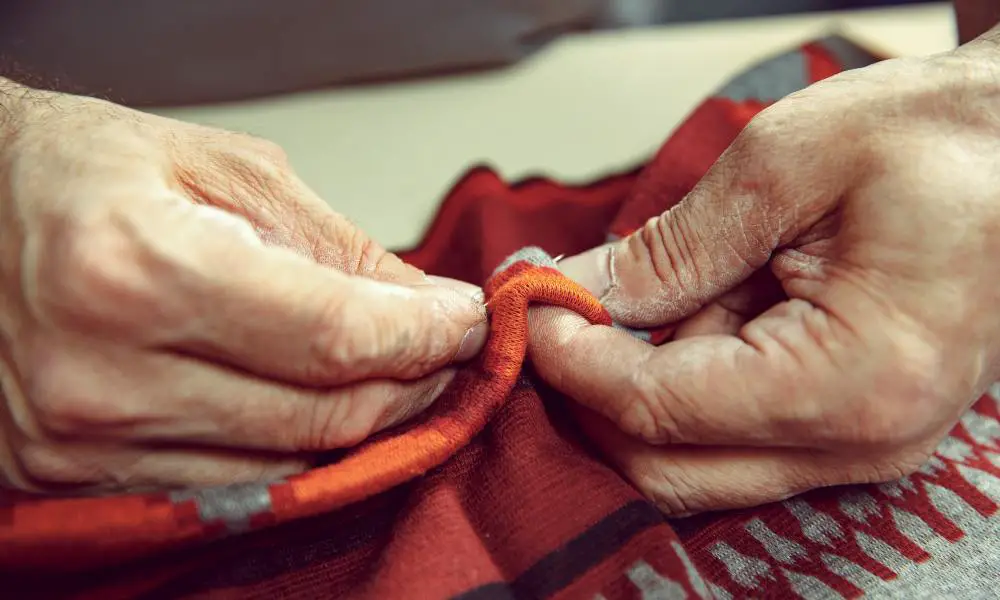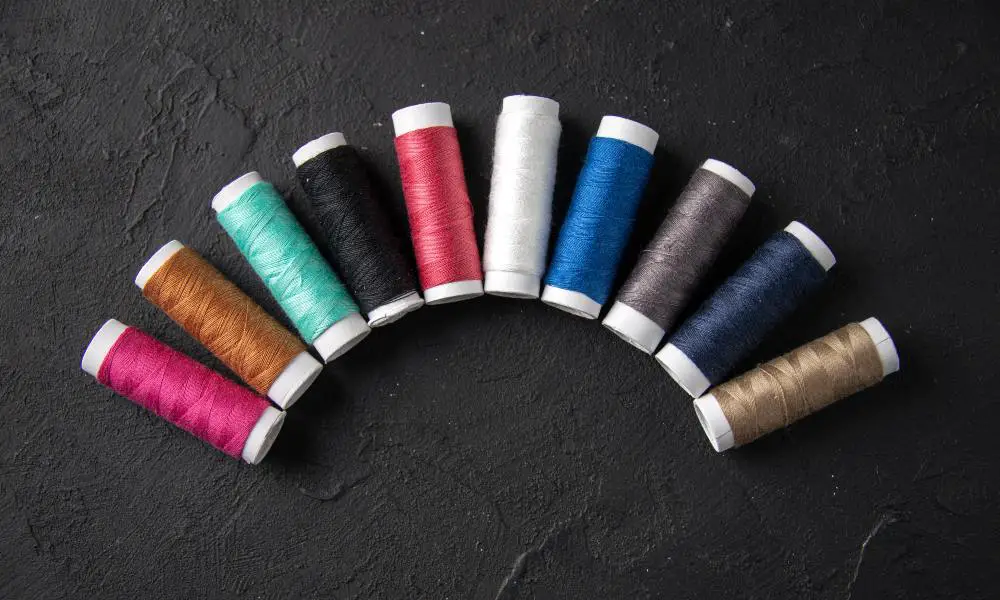Have you ever been in the middle of a sewing project only to realize you’ve run out of regular thread? You may wonder if embroidery thread can replace regular sewing thread and finish the job in a pinch. While it may seem like a quick fix, some crucial differences between embroidery and sewing threads impact how they perform. Please keep reading to learn the key distinctions, when embroidery thread can work, and tips for sewing with it successfully.
What Exactly is Embroidery Thread?
Before comparing it to sewing thread, let’s review what gives embroidery thread unique properties. Embroidery thread is made from loosely twisted cotton, rayon, polyester, or other fibers that are spun together to form smooth, lustrous, fine threads. The colors are dyed to have a rich, variegated appearance.
The threads are tightly wound, which gives embroidery floss its signature sheen. They are intended for stitching decorative designs on fabric surfaces with stitches like cross stitch, satin stitch, or chain stitch. Using numerous strands together also allows embroidery threads to cover and enhance the fabric’s texture fully.
How Does Embroidery Thread Differ from Sewing Thread?
While both are meant for working with fabric, embroidery, and sewing threads, they differ in a few ways that impact their performance:
Composition and Texture
Sewing thread is usually made of cotton or polyester fibers with a matte appearance. Embroidery thread contains more delicate fibers like rayon, which makes it shinier.
Weight
Standard sewing thread is medium to heavy weight. Embroidery floss is composed of excellent, lightweight thread.
Twist
Sewing thread has a low amount of twist, allowing it to pass through fabric smoothly without fraying. The high twist of embroidery thread defines it for stitching on fabric surfaces.
When Can Embroidery Thread Work for Sewing?
The lightness and smoothness of embroidery floss make it feasible to use in some basic sewing applications:
Lightweight, Delicate Fabrics
Embroidery thread can define airy fabrics like chiffon or lace without overwhelming them.
Temporary Basting
Basting temporarily secures layers or pieces in place for sewing. The embroidery thread holds things steady but is easy to remove.
Decorative Accents
Adding colorful embroidery thread accents is an easy way to decorate garments and accessories.
Hand Sewing

For mending holes or hand hemming, embroidery floss can be an excellent option. It slides smoothly through the fabric by hand.
Potential Drawbacks of Substituting Embroidery for Sewing Thread
However, there are some significant downsides to relying on embroidery thread for general sewing:
Lack of Strength
It’s not as strong or durable as standard thread, so seams are at risk of failing.
Can Damage Fabric
Fine, twisted threads can cut into the fabric, especially delicate knits.
Limited Color Selection
You may not find an exact color match for your project.
Tips for Sewing Success with Embroidery Thread
If you want to try using embroidery thread for basic sewing, here are some tips:
- Use a small, sharp needle to avoid shredding the thread
- Loosen embroidery thread tension slightly
- Reinforce seams with regular thread for added strength
- Limit use to decorative top-stitching or accents
Frequently Asked Questions
Why won’t my sewing machine pick up the bobbin thread?
Potential causes include incorrect threading, bobbin wound wrong, lint buildup, tension problems, hitches in the thread path, etc. Review step-by-step threading instructions.
How do I fix bobbin tension on my sewing machine?
Ensure that the bobbin case is free from dirt or lint. Verify that the bobbin is wound correctly and positioned within the case. Adjust the screw on the case to tighten or loosen tension as needed.
Why is my sewing machine not catching the bobbin thread?
The top threading may be incorrect, preventing the hook from catching the bobbin thread. Make sure the presser foot is up during threading. Check for obstructions in the bobbin area.
How do I know if my sewing machine bobbin is threaded correctly?
The thread should unwind counterclockwise from the bobbin. Pulling the top thread should raise the bobbin thread through the plate. Refer to your manual.
Why will my needle not pick up the bobbin thread?
Potential causes include:
A wrong needle.
Poor needle condition.
Incorrect pressure foot.
Lint buildup.
Problems with the bobbin winder.
While not a perfect 1:1 substitution, embroidery thread can work in a pinch for lightweight sewing tasks. But for heavy seams or stretch fabrics, standard sewing thread is still the best choice.
So, can you sew with embroidery thread? In some cases, yes, but with care! Let me know if you’ve tried sewing with this decorative thread and how it worked.
***
Main image: freepik.com

